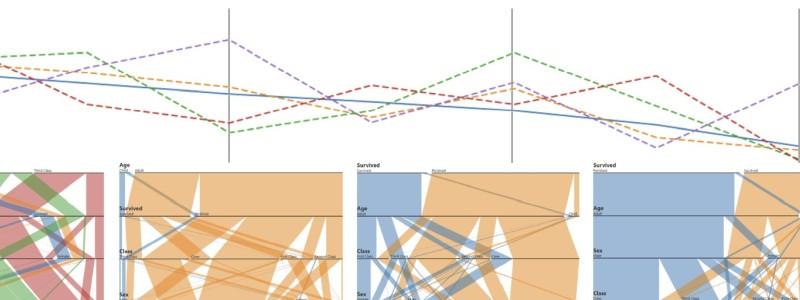
ParSetgnostics: Quality Metrics for Parallel Sets
F. L. Dennig, M. T. Fischer, M. Blumenschein, J. Fuchs, D. A. Keim, E. Dimara
Computer Graphics Forum, DOI:10.1111/cgf.14314, 2021Quality Metrics Information Visualization
While there are many visualization techniques for exploring numeric data, only a few work with categorical data. One prominent example is Parallel Sets, showing data frequencies instead of data points - analogous to parallel coordinates for numerical data. As nominal data does not have an intrinsic order, the design of Parallel Sets is sensitive to visual clutter due to overlaps, crossings, and subdivision of ribbons hindering readability and pattern detection. In this paper, we propose a set of quality metrics, called ParSetgnostics (Parallel Sets diagnostics), which aim to improve Parallel Sets by reducing clutter. These quality metrics quantify important properties of Parallel Sets such as overlap, orthogonality, ribbon width variance, and mutual information to optimize the category and dimension ordering. By conducting a systematic correlation analysis between the individual metrics, we ensure their distinctiveness. Further, we evaluate the clutter reduction effect of ParSetgnostics by reconstructing six datasets from previous publications using Parallel Sets measuring and comparing their respective properties. Our results show that ParSetgostics facilitates multi-dimensional analysis of categorical data by automatically providing optimized Parallel Set designs with a clutter reduction of up to 81% compared to the originally proposed Parallel Sets visualizations.
Related Publication







